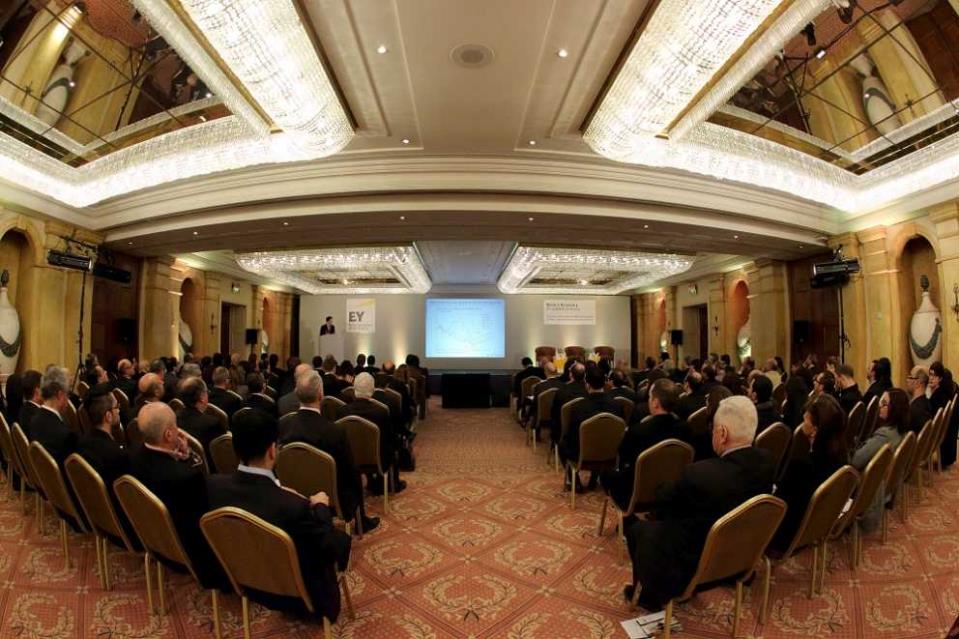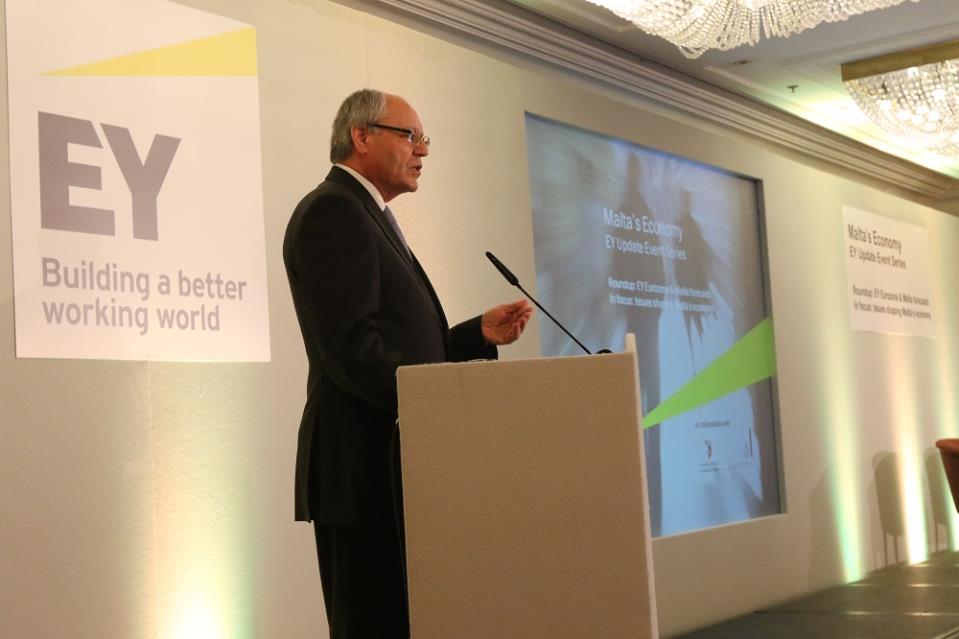EY has issued a generally positive outlook for Malta over the next 5 years, with lower energy costs – the result of both electricity tariff reductions and cheaper international oil prices –fuelling consumer spending and contributing to economic growth this year.
But according to the spring 2015 EY Eurozone Forecast – published in collaboration with Oxford Economics – Malta’s economic growth rate is nevertheless expected to decline between now and 2019, although it is still expected to be higher than the Eurozone average.
As he presented the forecast, Oxford Economics’ Tom Rogers noted that it was the most positive forecast for the Eurozone since the arrival of a global economic crisis in 2008, with a domestic recovery that began in 2014 gaining strength this year as a result of lower energy costs and the European Central Bank’s intervention.
Mr Rogers observed that Malta weathered the crisis better than most of the Eurozone’s members, partly as a result of starting out with a relatively low debt-to-GDP ratio and the lack of problems with its banking sector.
Real GDP growth is estimated to have been 3.4% last year, and EY expects a growth of 2.7% this year and 2.3% the next. The economic growth rate is expected to decline further to 2% in 2017 and 1.8% in both 2018 and 2019.
This translates to an average annual economic growth of 2.1% between 2015 and 2019, the tenth highest in the Eurozone, where the average rate is predicted to be 1.6%. But Mr Rogers noted that many of the countries with higher predicted growth rates – including the Baltic States, Ireland, Spain and Greece – have gone through significant economic crises in past years, unlike Malta.
 Malta’s low unemployment rate is expected to remain stable, with a forecast average rate of 5.7% this year and 5.6% throughout the following four years.
Malta’s low unemployment rate is expected to remain stable, with a forecast average rate of 5.7% this year and 5.6% throughout the following four years.
But Mr Rogers noted that ironically, this low unemployment could prove to be a key constraint to economic growth going forward, due to a scarcity of spare labour. One way of addressing this, he explained, was boosting Malta’s labour participation rate, which has increased sharply over the previous 10 years.
However, EY predicts that the rate of improvement will not be as high in the next year – it somewhat levelled off in the past two years, Mr Rogers observed – and this is a key factor behind the relatively low economic growth projections in future years.
Another issue highlighted by Mr Rogers was the fact that borrowing costs in Malta were relatively high, pointing out that it was still cheaper to borrow in Spain, in spite of the effect of that country’s banking crisis.
According to the forecasts, Malta’s government deficit will continue to decrease over the next few years, but at a slower rate than the government’s own predictions. It expects that government deficit will amount to 2% of GDP this year – the government’s own budget forecast is 1.6% – reach 1.7% in 2016 and keep falling until it reaches 1% in 2019.
EY also notes that Malta’s longer-term prospects would benefit from reforms to raise competitiveness – Mr Rogers explained that Malta’s competitiveness has fallen in past years as the crisis led to wages falling in other countries.
Ultimately, however, it declares that Malta’s outlook is “reasonably bright,” with balanced risks and a number of factors – including the effect of the ECB’s own policies and lower oil prices and interest rates – which may lead to better-than-expected economic growth.
 Presenting the opposition’s perspective, shadow minister for the economy Claudio Grech agreed that fundamentally, Malta’s economy was presently doing well.
Presenting the opposition’s perspective, shadow minister for the economy Claudio Grech agreed that fundamentally, Malta’s economy was presently doing well.
“Whoever tries to depict that our economy is in dire straits would certainly be reading the figures wrongly,” he maintained.
Nevertheless, he insisted that Malta could not afford to be complacent, stating that one cannot simply assume that the sectors that are performing well now will continue to do so in the future.
Mr Grech said that continued economic growth could only happen if investment is accelerated, stating that simply reducing energy tariffs would not lead to the automatic creation of industry.
He said that by no means was he implying that lower energy costs were not a key factor, but said that the economic focus should be on growth and on the sectors in which this growth is being created.
 On his part, Finance Minister Edward Scicluna said that the economy was seeing more action than in the recent past, and said that there was the need to develop the right environment for venture capital to take place.
On his part, Finance Minister Edward Scicluna said that the economy was seeing more action than in the recent past, and said that there was the need to develop the right environment for venture capital to take place.
He said that developing this right environment included fighting against bureaucracy, which he described as a very difficult task, stating that some two-thirds of his efforts were devoted to addressing it and finding the way forward.
Prof. Scicluna said that it was positive that for the first time in a few years, Malta’s investment-to-GDP ratio had improved, noting how it had consistently decreased from a high of around 30% in the 80s to a nadir of around 17% before going up by 1.4 percentage points last year.
He remarked that this improved the country’s economic growth potential, and said that projects such as the investment in Maltese hospitals and Smart City Malta would continue boosting Malta’s investment rate.